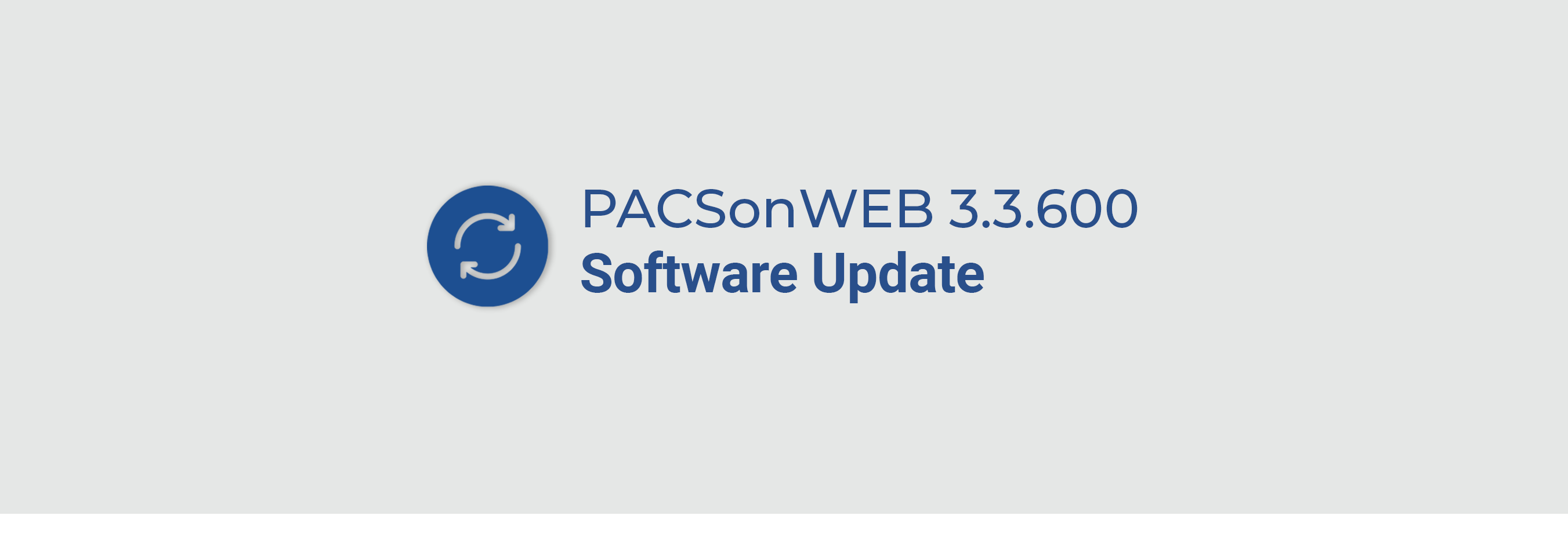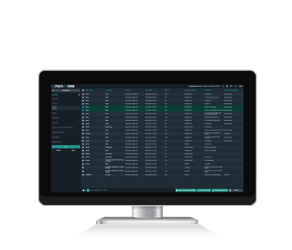
PACSonWEB 3.3.600: new release features volumetric registration, faster rendering performance and new collaboration tools for reporting
With the release of PACSonWEB 3.3.600, we’re introducing volumetric registration, a faster rendering performance and new collaboration options for reporting. Reporting improvements include multiple author reporting, the ability to view and compare all report versions (with differences highlighted automatically), and auto-save, to ensure that work isn’t lost due to a faulty connection or interruption. Our focus continues to be on ways to enhance and streamline your reporting workflow, and ensure that PACSonWEB is leading the way as a fully-fledged, cloud-based diagnostic solution.
PACSonWEB 3.3.600 in action.
Or book a 15-minute call with a PACSonWEB application specialist
|
These are the key improvements in PACSonWEB 3.3.600:
When diagnosing medical images, radiologists and reading physicians often compare new images with prior ones, to assess the evolution over time. For example, to determine if a suspicious lesion has grown, and how much it has grown.
Putting two X-ray images side-by-side is not an issue. But accurate comparison of two volumetric imaging acquisitions (for example two CT or two MRI studies) is more challenging. In PACSonWEB 3.3.600, we’ve added an ‘image registration’ algorithm, to automate the tedious task of aligning two volumetric scans, saving you time and effort.
PACSonWEB already features numerous optimizations for image rendering performance. Still, when users were manipulating high-resolution images, and using speech recognition at the same time, the limits of the cloud-native solution could be reached.
Now, with PACSonWEB 3.3.600, the image rendering performance is further improved, to ensure that even in the most demanding scenarios the user is not delayed in the diagnostic process.
Historically, web applications have been constrained by numerous limitations imposed by the browser and could not compete in terms of performance with traditional desktop applications. However, with the advent of modern JavaScript APIs, this gap is closing swiftly. One example is the traditional single threaded nature of JavaScript applications. While the event loop in a browser has been heavily optimized, it cannot hide the fact that all JavaScript work must be performed sequentially.
For PACSonWEB, the most CPU intensive tasks are rendering and speech recognition. In the worst-case scenarios, when these workloads are contending for precious CPU cycles on the main JavaScript thread, we could observe two profoundly negative effects:
- The task itself must wait a while in the event loop queue, e.g. rendering stutters
- Other important tasks are also delayed, e.g. UI interactivity is degraded
By making use of modern JavaScript APIs, PACSonWEB manages to offload most of the computations to background threads. This is done using a combination of Web Workers[1], SharedArrayBuffer[2] and OffscreenCanvas[3].
Instead of simply drawing on the HTML canvas from the main thread, PACSonWEB renders images using the following strategy:
- A single-purpose WebWorker is started for each visible viewport
- Render requests are issued to this worker for every manipulation (zoom/pan/WL/..)
- The original raw pixel data is encapsulated in a SharedArrayBuffer to minimize data transfer overhead between the main thread and the web workers
- The worker calculates the final image and draws it onto an OffscreenCanvas
- Behind the scenes, this OffscreenCanvas is connected to a visible canvas on the screen, causing the result to become visible to the user
The end result: significantly reduced strain on the JavaScript main thread, which positively impacts UI interactivity and scalability in general.


